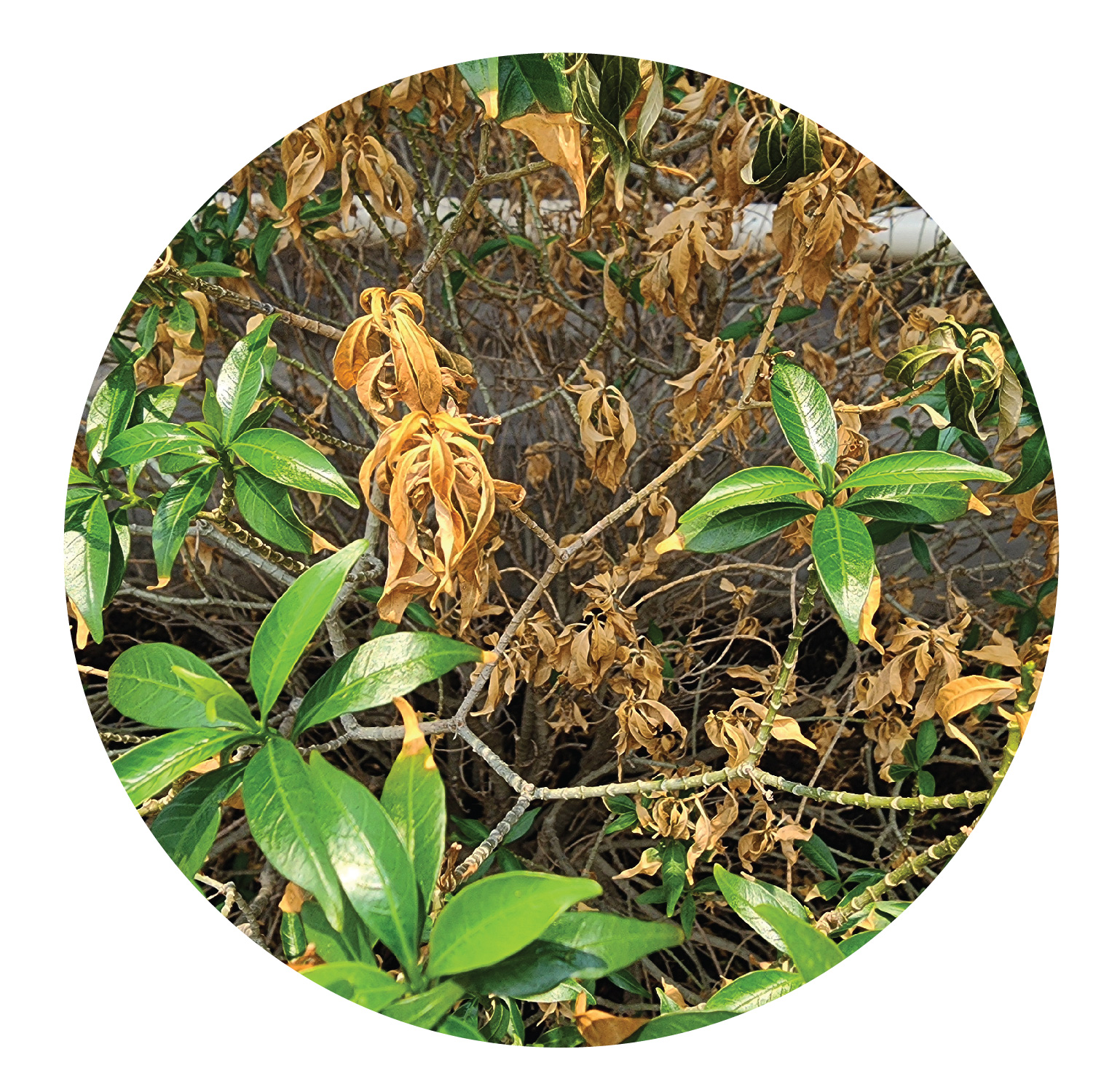Above ground, plants require a variety of conditions to survive and thrive. This section discusses the basic above-ground conditions plants require including watering, lighting, and spacing conditions.
Water
Water is a required element for all plants to carry out the process of photosynthesis and can encompass up to 95% of a plant’s total tissue¹. As carbon dioxide is captured from the air and hydrogen is absorbed through roots in the soil, oxygen is released through a leaf’s stomata. Throughout the process, water is evaporated through a process known as transpiration which pulls water up through the roots toward the leaves which in turn builds cell structure to support plants. When plants lack the available water required, leaf curl, needle browning, or needle drop can ultimately result in a plant’s mortality.
The best practice for general plant watering is to water thoroughly and deeply as opposed to frequent, light watering to encourage deeper root growth for plant establishment.
The decreasing gradient of water potential from the soil through the plant to the atmosphere allows plants to take up water from the soil. Figure from Smith and Smith (2006) in The Soil Moisture Niche in a Moist Tropical Forest – A Demographic Approach.
Light
Light is required for photosynthesizing plants to produce carbohydrates (energy) from the conversion of carbon dioxide and water. When lacking adequate light, energy reserves are depleted, not enough chlorophyll is produced, and plants will typically decline or die. Signs of a light deficiency in plants typically include ‘legginess’ where stems are long and thin or leaf drop, especially for older leaves. For variegated plants, color may revert to solid green and flowering plants may fail to produce buds. If a plant is receiving too much light, the color of plant may become scorched or bleached².
Plants can be classified by their shade tolerance to determine the site conditions a plant can handle. Some plants may tolerate other conditions but won’t reach their full health (e.g. flowering, reaching desired height). Typical light classes include full sun (more than 6 hours of sun), part shade/part sun (4-6 hours of sun), and shade (less than 4 hours of sun).
Shrub damaged from receiving too much sunlight; see leaf scorch in curling brown leaves.
Space
Above-ground structures and utilities can limit the available space for plantings in the landscape. Plants, especially trees and shrubs must be suitable for the urban site above ground so they aren’t prohibitive of access. In urban areas, impermeable surfaces including asphalt and concrete can impact plantable space. Reducing impermeable surfaces in landscape design is critical to maximize the volume of water and air that can infiltrate into the ground
As space becomes limiting, plants require pruning to maintain clearances from structures. Repetitive clearance pruning can become stressful, particularly on tree health and can result in mechanical damage to the stem and branches. Careful consideration for selecting the right plant size for the right place should be practiced by learning the maximum plant spread and height and accounting for mature spread in planting design. For trees in particular, the designer should consider the mature height and spread of the tree beyond the typical 25-year drawing representation to ensure appropriate spacing is accounted for.
Clearance pruning of trees and shrubs can result in stress of the plant overtime. The trees in the right of image are planted too close to the building and do not have appropriate space to reach full maturity and health.
1. Richmond, Jodi. How Plants Use Water. University of West Virginia, 2021.
2. University of Minnesota. Lighting for indoor plants and seeds. Yard and Garden Extension. 2024.


